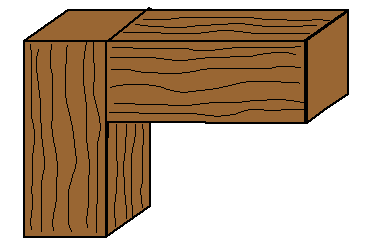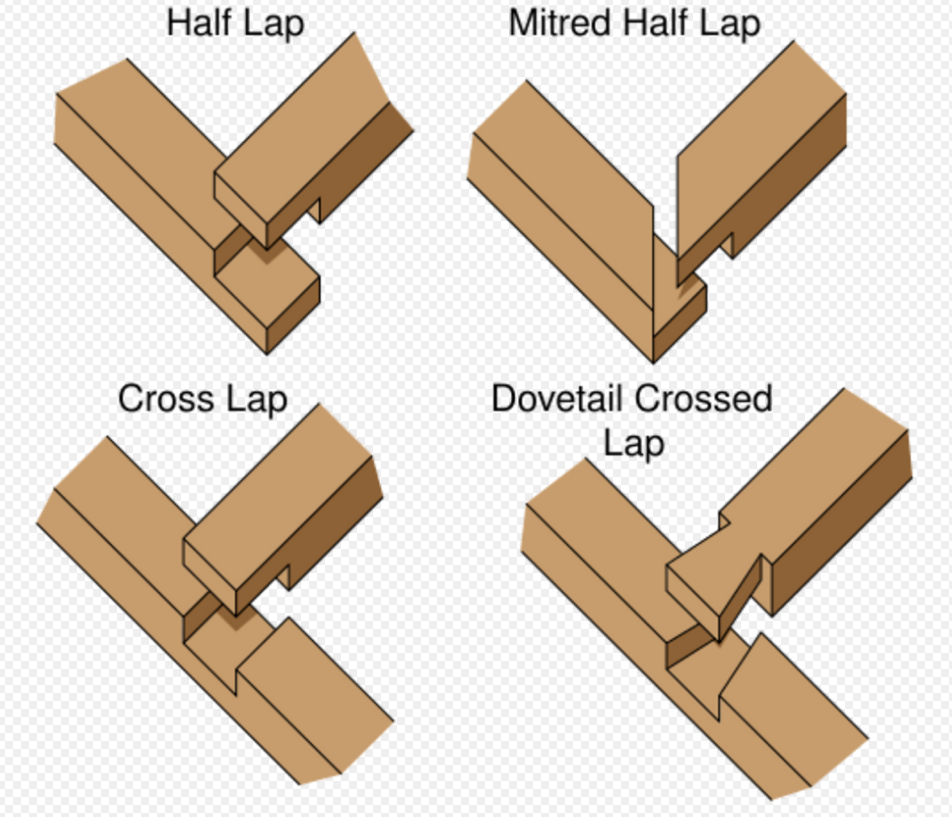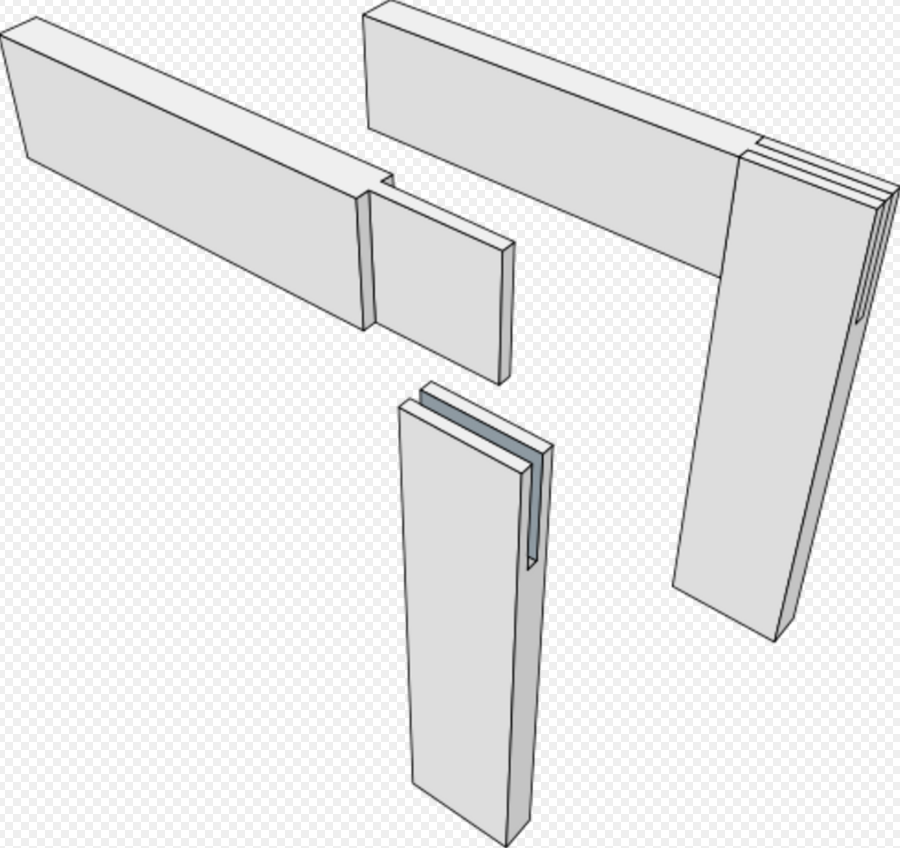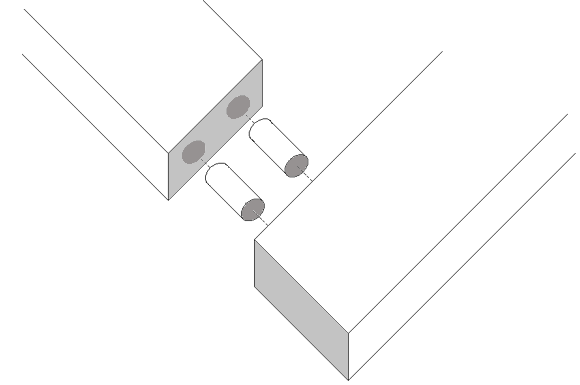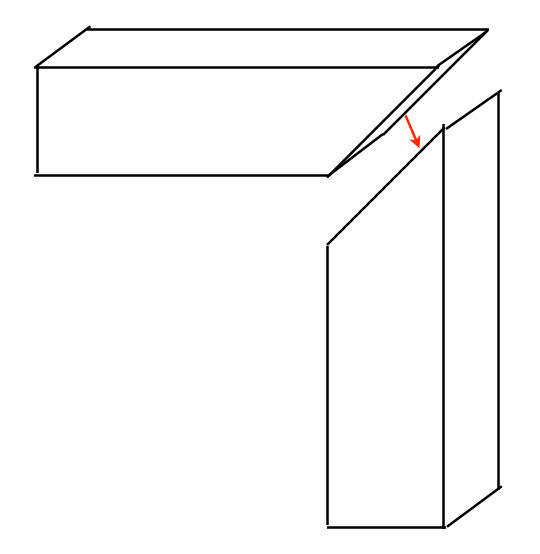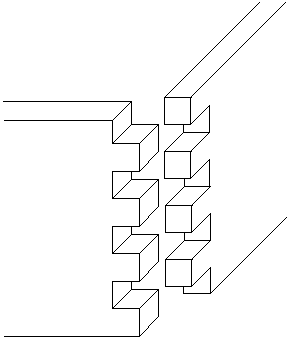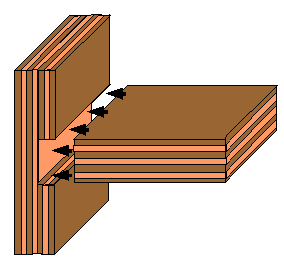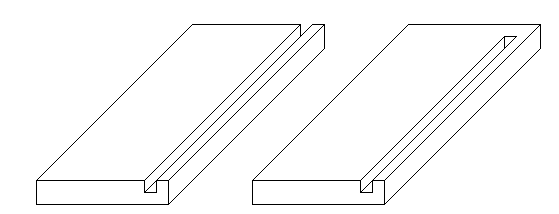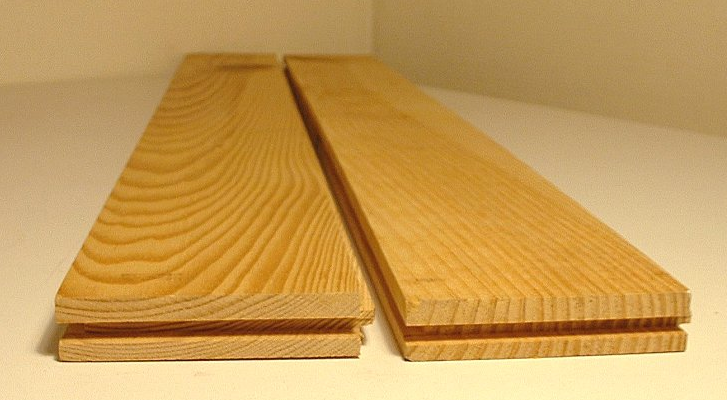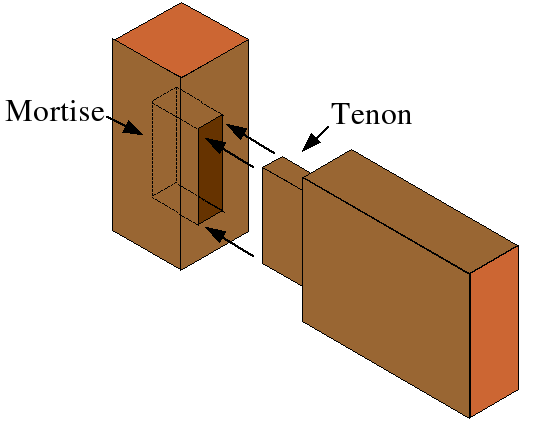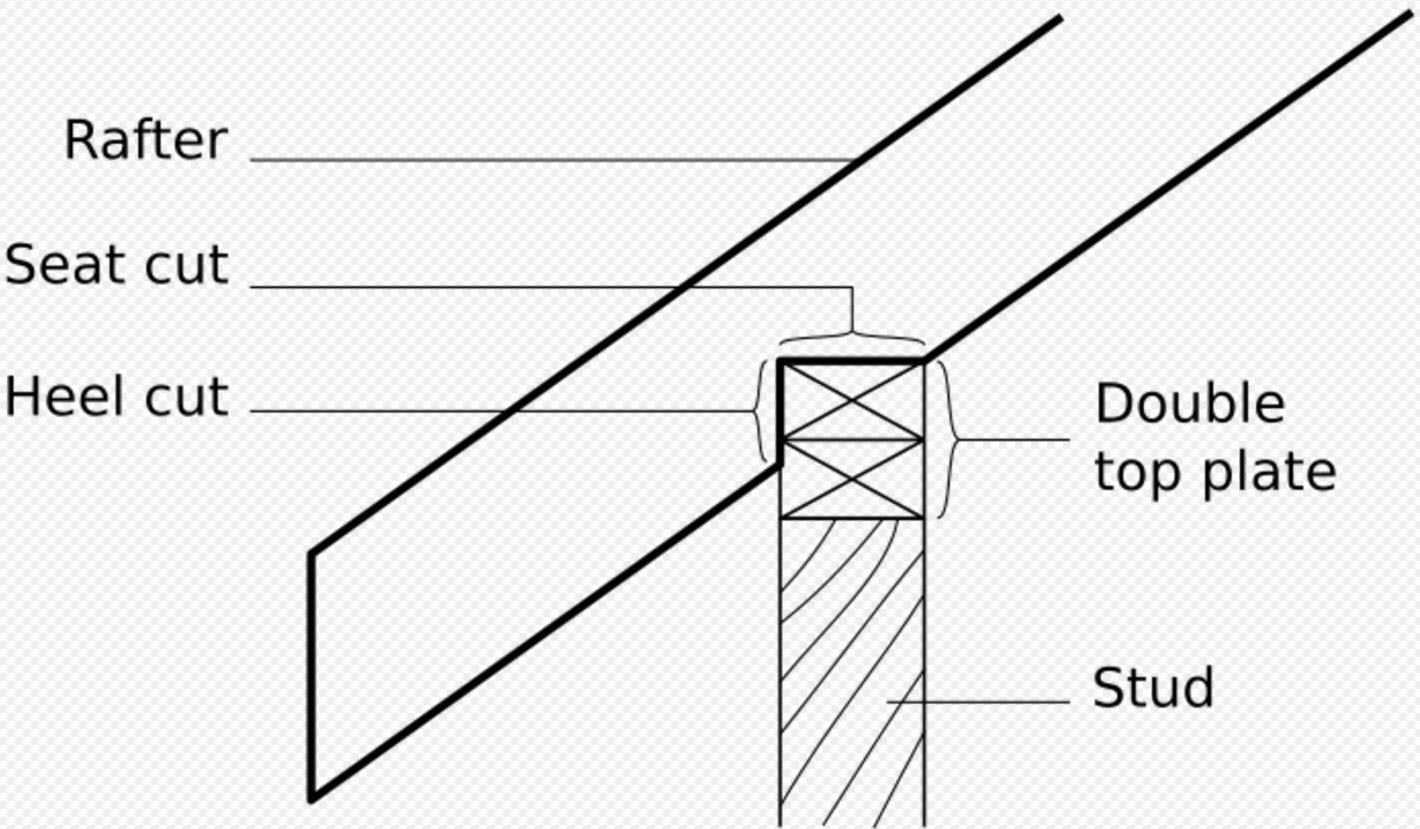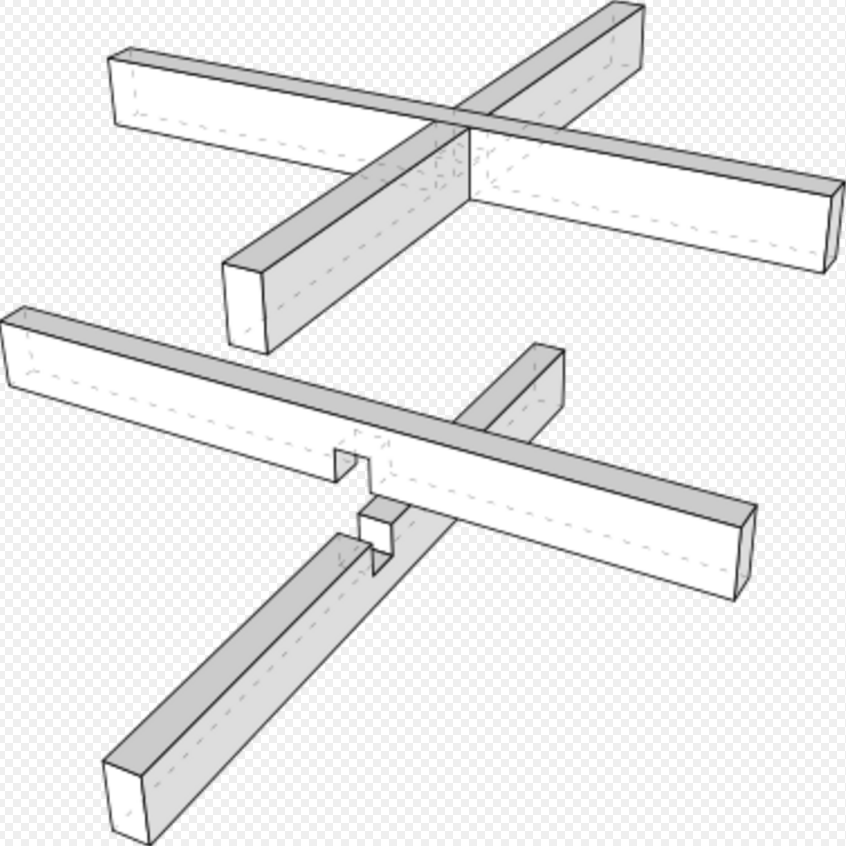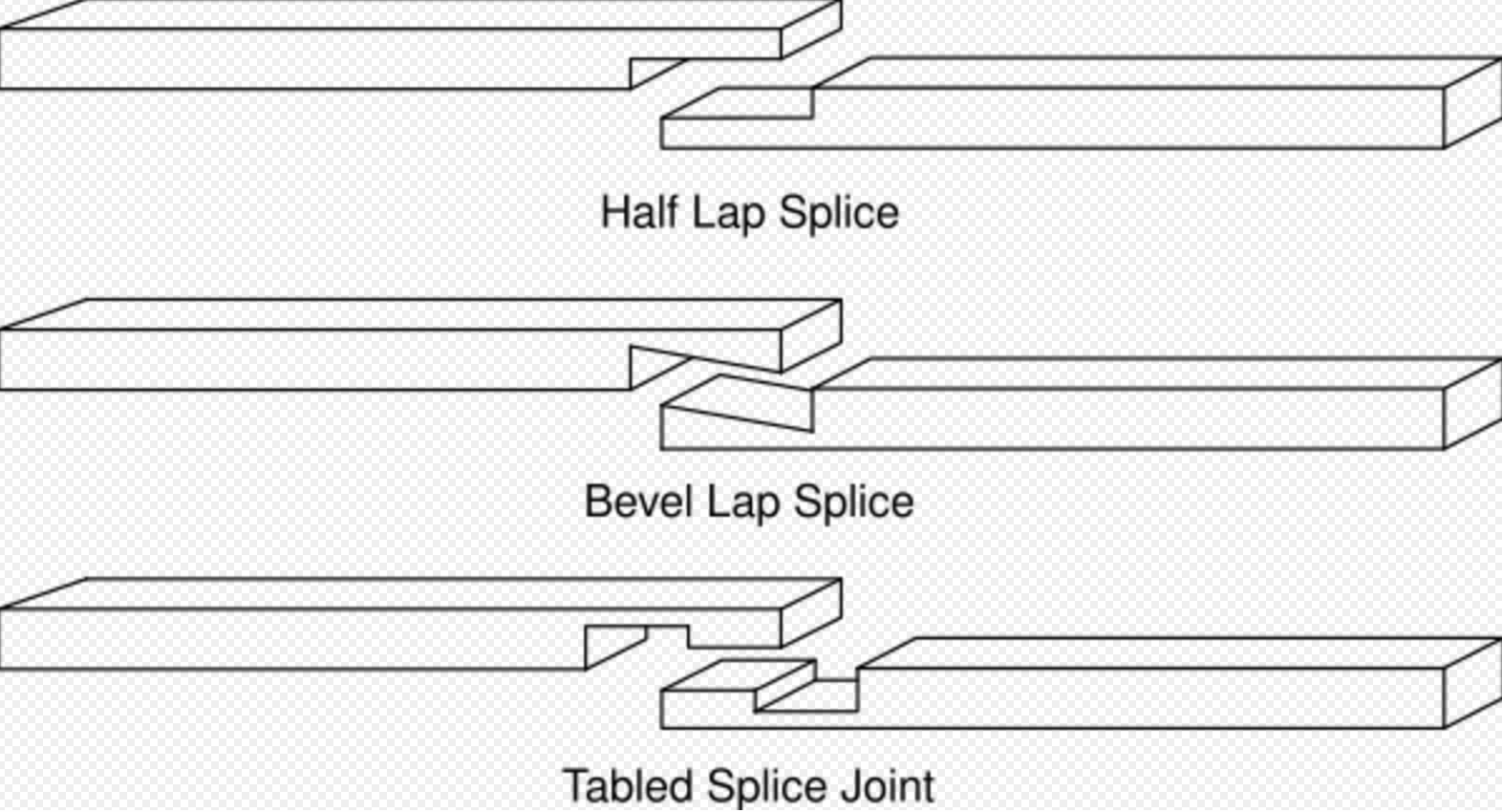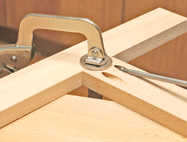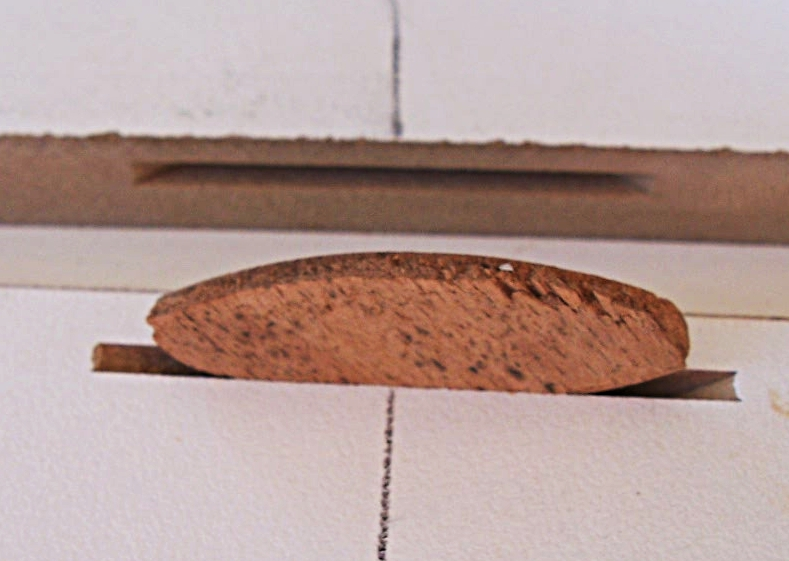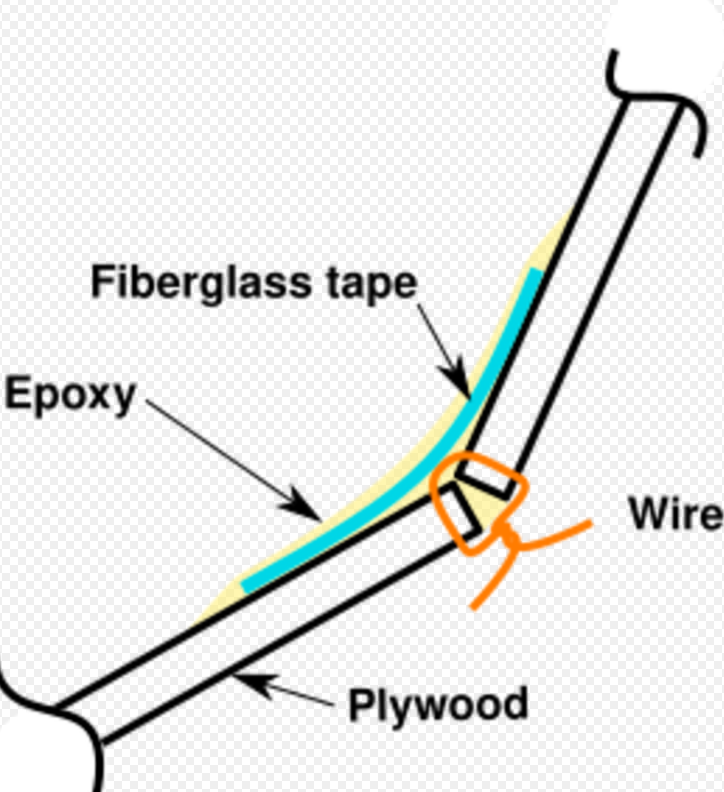
Video Upload Options
Joinery is a part of woodworking that involves joining pieces of wood or lumber, to produce more complex items. Some wood joints employ fasteners, bindings, or adhesives, while others use only wood elements. The characteristics of wooden joints - strength, flexibility, toughness, appearance, etc. - derive from the properties of the materials involved and the purpose of the joint. Therefore, different joinery techniques are used to meet differing requirements. For example, the joinery used to construct a house can be different from that used to make puzzle toys, although some concepts overlap. In British English usage it is distinguished from carpentry which relates to structural timber work.
1. Types of Wood Joints
1.1. Traditional Woodworking Joints
| Joint | Image | Description |
|---|---|---|
| Butt joint |
https://handwiki.org/wiki/index.php?curid=1745023 |
The end of a piece of wood is butted against another piece of wood. This is the simplest and weakest joint. Of those, there is the a) T-butt, b) end-to-end butt, c) Miter butt and d) edge-to-edge butt. |
| Lap joint |
https://handwiki.org/wiki/index.php?curid=2010157 |
The end of a piece of wood is laid over and connected to another piece of wood. Due to a large surface area of long-grain to long-grain wood and glue surface coverage, this is a very strong joint.[1] |
| Bridle joint |
https://handwiki.org/wiki/index.php?curid=2022848 |
Also known as open tenon, open mortise and tenon, or tongue and fork joints, this joint is where the through mortise is open on one side and forms a fork shape. The mate has a through tenon or necked joint. Bridle joints are commonly used to join rafter tops, also used in scarf joints and sometimes sill corner joints in timber framing. |
| Dowel joint |
https://handwiki.org/wiki/index.php?curid=1221928 |
The end of a piece of wood is butted against another piece of wood. This is reinforced with dowel pins. This joint is quick to make with production line machinery and so is a very common joint in factory-made furniture. |
| Cross dowel joint |
https://handwiki.org/wiki/index.php?curid=1916953 |
A threaded metal dowel is inserted into a drilled slot. A screw is then inserted through an opposing slot and tightened to create a pull effect. This type of join is a very common joint in factory-made furniture. |
| Mitre joint |
https://handwiki.org/wiki/index.php?curid=1310245 |
Similar to a butt joint, but both pieces have been beveled (usually at a 45-degree angle). |
| Box joint |
https://handwiki.org/wiki/index.php?curid=1401590 |
A corner joint with interlocking square fingers. Receives pressure from two directions. |
| Dovetail joint |
https://handwiki.org/wiki/index.php?curid=2073097 |
A form of box joint where the fingers are locked together by diagonal cuts. |
| Dado joint |
https://handwiki.org/wiki/index.php?curid=1823608 |
Also called a housing joint or trench joint, a slot is cut across the grain in one piece for another piece to sit in; shelves on a bookshelf having slots cut into the sides of the shelf, for example. |
| Groove joint |
https://handwiki.org/wiki/index.php?curid=1540555 |
Like the dado joint, except that the slot is cut with the grain. Sometimes referred to interchangeably with the dado joint. |
| Tongue and groove |
https://handwiki.org/wiki/index.php?curid=1902228 |
Each piece has a groove cut all along one edge, and a thin, deep ridge (the tongue) on the opposite edge. If the tongue is unattached, it is considered a spline joint. |
| Mortise and tenon |
https://handwiki.org/wiki/index.php?curid=1738418 |
A stub (the tenon) will fit tightly into a hole cut for it (the mortise). This is a hallmark of Mission Style furniture, and also the traditional method of jointing frame and panel members in doors, windows, and cabinets. This joint is a good strong joint to use. |
| Birdsmouth joint |
https://handwiki.org/wiki/index.php?curid=2013155 |
Also called a bird's beak cut, this joint used in roof construction. A V-shaped cut in the rafter connects the rafter to the wall-plate.[2] |
| Cross lap |
https://handwiki.org/wiki/index.php?curid=1996148 |
A joint in which the two members are joined by removing material from each at the point of intersection so that they overlap. |
| Splice joint |
https://handwiki.org/wiki/index.php?curid=2010256 |
A joint used to attach two members end to end. |
1.2. Nontraditional Woodworking Joints
| Joint | Image | Description |
|---|---|---|
| Pocket-hole joinery |
https://handwiki.org/wiki/index.php?curid=1310733 |
A hidden screw is driven into the joint at an angle. |
| Biscuit |
https://handwiki.org/wiki/index.php?curid=1091395 |
A wooden oval is glued into two crescent-shaped holes. |
| Floating tenon joint | Also known as a loose tenon joint, a type of mortise and tenon joint where both pieces are mortised and the tenon is a separate piece that fits into both mortises. | |
| Stitch and glue |
https://handwiki.org/wiki/index.php?curid=2033304 |
Wood panels stitched together, usually with copper wire, and glued together with epoxy resin. |
| Knapp joint | Also known as scallop and dowel, scallop and peg,[3] pin and cove, pin and scallop, or half moon.[4][5] Most furniture factories in the East and Midwest of the United States made Knapp joint drawers from around 1871 to 1900.[5] |
1.3. Traditional Ways of Improving Joints

- Dowel: A small rod is used internal to a joint both to help align and to strengthen the joint. Traditional joints are used with natural timbers as they do not need materials other than the timber itself. for example: Butt joints. Dowel joints are also useful for pegging together weaker, cheaper composite materials such as laminate-faced chipboard, and where limited woodworking tools are available (since only simple drilled holes are needed to take the dowels).
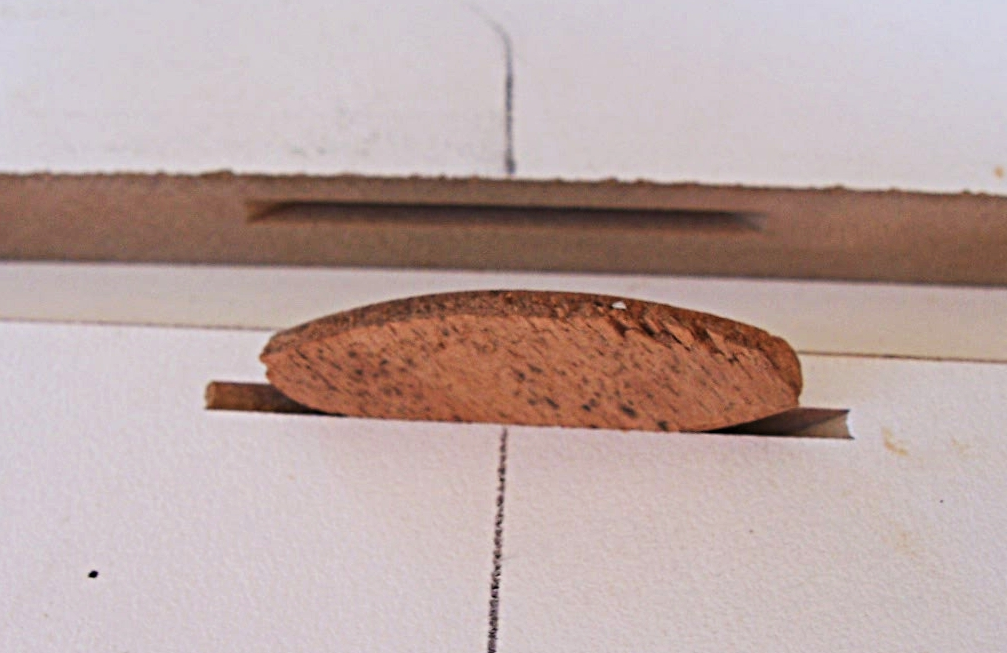
1.4. Nontraditional Ways of Improving Joints
- Biscuit joints: A small 'fish' is used to help align an edge or butt joint when gluing.
- Domino joiner: A trademarked fish similar to a biscuit joiner, where a piece larger than a biscuit has some of the advantages of dowels, and some of the advantages of biscuits.[6]
2. Properties of Wood
Many wood joinery techniques either depend upon or compensate for the fact that wood is anisotropic: its material properties are different along different dimensions.
This must be taken into account when joining wood parts together, otherwise the joint is destined to fail. Gluing boards with the grain running perpendicular to each other is often the reason for split boards, or broken joints. Furniture from the 18th century, while made by master craftsmen, did not take this into account. The result is this masterful work suffers from broken bracket feet, which was often attached with a glue block which ran perpendicular to the base pieces. The glue blocks were fastened with both glue and nails, resulting in unequal expansion and contraction between the pieces. This was also the cause of splitting of wide boards, which were commonly used during that period.
In modern woodworking it is even more critical, as heating and air conditioning cause major changes in the moisture content of the wood. All woodworking joints must take these changes into account, and allow for the resulting movement.[7]
2.1. Strength
Wood is stronger when stressed along the grain (longitudinally) than it is when stressed across the grain (radially and tangentially). Wood is a natural composite material; parallel strands of cellulose fibers are held together by a lignin binder. These long chains of fibers make the wood exceptionally strong by resisting stress and spreading the load over the length of the board. Furthermore, cellulose is tougher than lignin, a fact demonstrated by the relative ease with which wood can be split along the grain compared to across it.
Different species of wood have different strength levels, and the exact strength may vary from sample to sample.
2.2. Dimensional Stability
Timber expands and contracts in response to humidity, usually much less so longitudinally than in the radial and tangential directions. As tracheophytes, trees have lignified tissues which transport resources such as water, minerals and photosynthetic products up and down the plant. While lumber from a harvested tree is no longer alive, these tissues still absorb and expel water causing swelling and shrinkage of the wood in kind with change in humidity.[8] When the dimensional stability of the wood is paramount, quarter-sawn or rift-sawn lumber is preferred because its grain pattern is consistent and thus reacts less to humidity.
3. Materials Used for Joining

- Joints can be designed to hold without the use of glue or fasteners; a pinned mortise and tenon is an example of this.
- Glue is highly effective for joining timber when both surfaces of the joint are edge grain. A properly glued joint may be as strong or stronger than a single piece of wood. However, glue is notably less effective on end-grain surfaces. Animal glue is soluble in water, producing joints that can be disassembled using steam to soften the glue.
- Various mechanical fasteners may be used, the simplest being nails and screws. Glue and fasteners can be used together.
4. Traditional Joinery
Many traditional wood joinery techniques use the distinctive material properties of wood, often without resorting to mechanical fasteners or adhesives. While every culture in which pieces of wood are joined to make furniture or structures has a joinery tradition, wood joinery techniques have been especially well-documented, and are celebrated, in the Indian, Chinese, European, and Japanese traditions. Because of the physical existence of Indian and Egyptian examples, we know that furniture from the first several dynasties show the use of complex joints, like the Dovetail, over 5,000 years ago. This tradition continued to other later Western styles. The 18th-century writer Diderot included over 90 detailed illustrations of wood joints in his comprehensive encyclopedia.[9] While Western techniques focused on concealment of joinery, the Eastern societies, though later, did not attempt to "hide" their joints. The Japanese and Chinese traditions in particular required the use of hundreds of types of joints. The reason was that nails and glues used did not stand up well to the vastly fluctuating temperatures and humid weather conditions in most of Central and South-East Asia.[10] As well, the highly resinous woods used in traditional Chinese furniture do not glue well, even if they are cleaned with solvents and attached using modern glues.
5. Nontraditional Joinery
Methods that are not considered traditional joinery have come about in modern times, largely to attempt to simplify the job of the woodworker for various reasons. These include biscuit joints and pocket hole joinery.
References
- Wood Magazine "Wood Joint Torture Test" https://www.woodmagazine.com/woodworking-how-to/doors-drawers/wood-joint-torture-test-2-doors-drawers
- "Miscellaneous Joints". http://sawdustmaking.com/woodjoints/misc.htm.
- Megan Fitzpatrick. "The history of the cove-and-pin joint". 2018. https://www.finewoodworking.com/2018/09/26/history-cove-pin-joint
- "Fun furniture fact: The Knapp joint". https://furnishgreen.com/fun-furniture-fact-the-knapp-joint/
- Taylor, Fred (2017-07-19). "As solid as dovetails, Knapp joint solidly dates antique furniture drawers - Antique Trader". https://www.antiquetrader.com/antiques/knapp_joint_solid_as_dovetail_joints/.
- "Bespoke Joinery". https://riverdalejoinery.com/. Monday, June 22, 2020
- Pro Woodworking Tips.com
- Wood Movement, WoodworkDetails.com http://www.woodworkdetails.com/knowledge/wood/movement
- Diderot, Denis. "l'Encyclopeghdie". http://quod.lib.umich.edu/d/did/did2222.0001.571/--joinerywork-in-building?rgn=main;view=fulltext;q1=carpentry.
- Huntley, Michael (20 January 2009), "Michael Huntley demystifies the furniture making techniques of Chinese craftsmen prior to 1900", Wood Worker's Institute (GMC Publications), https://www.woodworkersinstitute.com/page.asp?p=809


